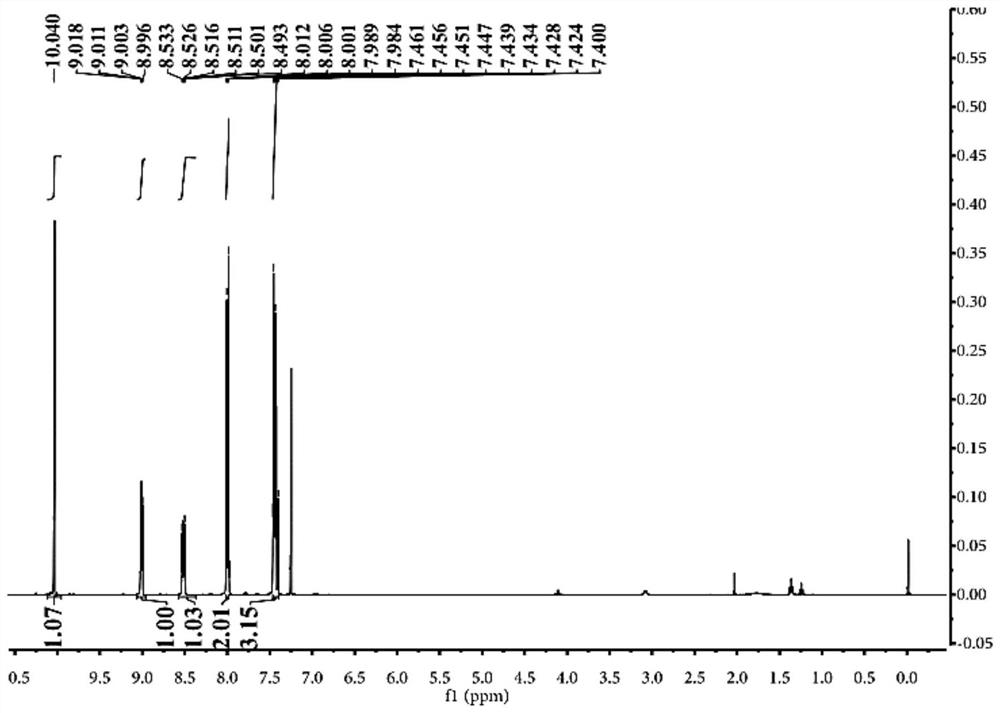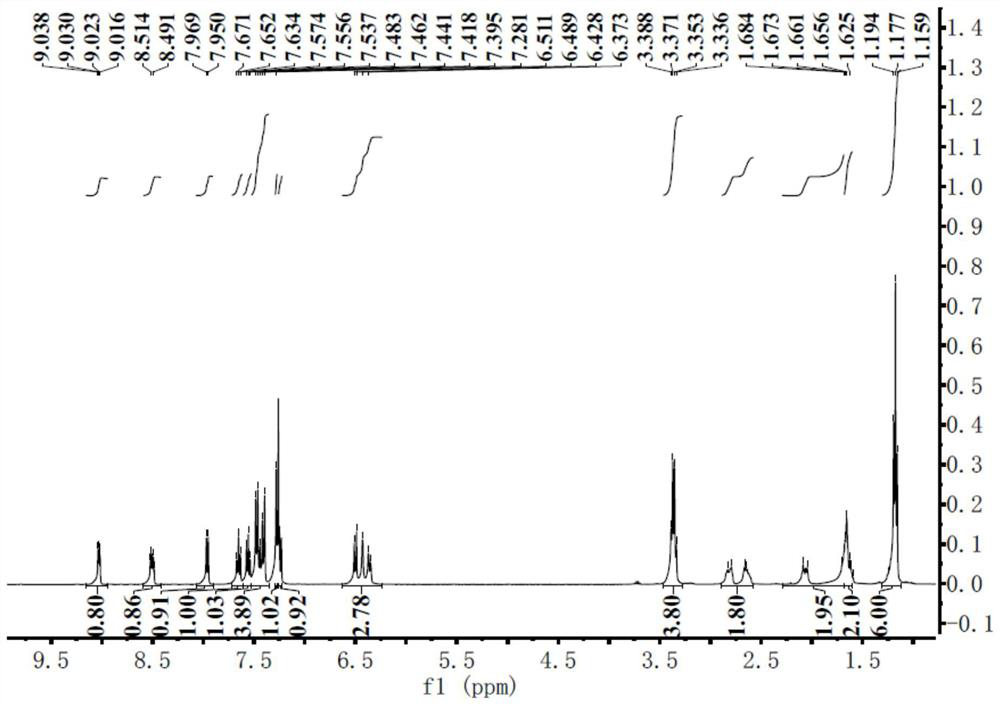A kind of near-infrared polyhydrogen sulfide fluorescent probe and its preparation method and application
A fluorescent probe, near-infrared technology, used in chemical instruments and methods, fluorescence/phosphorescence, organic chemistry, etc., can solve the problems of small Stokes shift, lack of fluorescent probes, difficult detection, etc., and achieve stable fluorescence intensity. , the effect of good selectivity and high sensitivity
- Summary
- Abstract
- Description
- Claims
- Application Information
AI Technical Summary
Problems solved by technology
Method used
Image
Examples
Embodiment approach
[0071] 1. Materials and instruments
[0072] LPS (lipopolysaccharide from Escherichia coli 026 B6); MTT cell proliferation / toxicity detection kit (Biosharp); Gibco DMEM high glucose medium (US Life Technologies); Gibco fetal bovine serum (US Life Technologies); penicillin (100 μg / mL) and streptomycin (100 μg / mL) (Life Technologies, USA); TLC using GF 254 Silica gel plate (250 μm), column chromatography using 300-400 mesh silica gel (Qingdao Ocean Chemical); the rest of the reagents are domestic analytical grade.
[0073] cell:
[0074] Species and strains: human breast cancer MCF-7 cell line.
[0075] Experimental animals:
[0076] Species and strains: healthy male Kunming mice, weighing 20-25 g. Source: Experimental Animal Center of Xuzhou Medical University. instrument:
[0077] ECZ-400S nuclear magnetic resonance instrument (Japan JEOL company); FV1000 laser confocal scanning microscope (Olympus, Japan); F4600 fluorescence spectrophotometer (Hitachi, Japan); LB983 Ni...
Embodiment 1
[0108] Preparation of Compound Ⅰ: Under ice-bath conditions, cyclohexanone (508 μL, 4.92 mmol) was slowly added dropwise to concentrated sulfuric acid (6.7 mL, 125.05 mmol), and 4-diethylamino ketoacid (0.5 g, 1.59 mmol). The mixed solution was reacted at 90° C. for 2 h, cooled to room temperature, and poured into ice water. Perchloric acid (620 μL, 10.86 mmol) was slowly added, and a red solid was precipitated, which was filtered by suction and washed with water (3×20 mL) to obtain 369.81 mg of compound with a yield of 48.9%. TLC (silica, CH 2 Cl 2 :CH 3 OH, 20:1v / v): R f = 0.4.
Embodiment 2
[0110] Preparation of 2-fluoro-5-nitrobenzoyl chloride: 2-fluoro-5-nitrobenzoic acid (0.5 g, 2.70 mmol) was dissolved in thionyl chloride (20 mL), and refluxed at 80° C. for 5 h. Distillation under reduced pressure gave 0.49 mg of solid, with a yield of 90.7%. TLC (silica, CH 2 Cl 2 :CH 3 OH, 20:1v / v): R f = 0.5.
PUM
 Login to View More
Login to View More Abstract
Description
Claims
Application Information
 Login to View More
Login to View More - Generate Ideas
- Intellectual Property
- Life Sciences
- Materials
- Tech Scout
- Unparalleled Data Quality
- Higher Quality Content
- 60% Fewer Hallucinations
Browse by: Latest US Patents, China's latest patents, Technical Efficacy Thesaurus, Application Domain, Technology Topic, Popular Technical Reports.
© 2025 PatSnap. All rights reserved.Legal|Privacy policy|Modern Slavery Act Transparency Statement|Sitemap|About US| Contact US: help@patsnap.com



